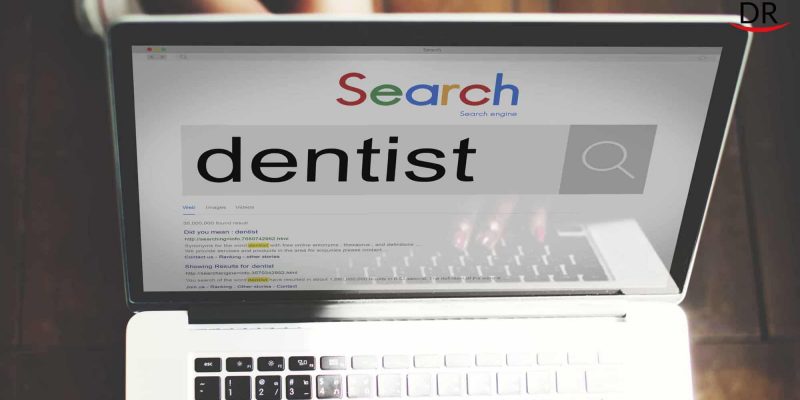Introduction
One of the highest risks a small business faces is being the target of fraud or embezzlement. Over one-third of all dental practices have experienced fraud at least once, distressingly only few dentists are properly trained or equipped to prevent it. In a small business, fraud comes in a variety of ways.
These range from prehiring screening techniques to using secure accounting software and even retaining a private investigator. An embezzler maybe found within the dentist’s clinic, or a supplier, or even a corporate; proper steps should to be taken in order to ensure that precautions are taken to vet partners, direct partners, indirect partners, suppliers, etc and the option of legal recourse considered if necessary. Large number of dentists have been or are victims of embezzlement, there are ways to ensure checks and balances are in place it does not happen to you.
Educational Outcome
The clinician will be able to do the following, upon completion of this article:
- Understanding 'fraud' is as the first step to preventing and combating its occurrence in the dental office.
- Prevention methods, beginning with establishing a high standard of in office ethics, proving yourself a key example and checking your staff’s records at each initial hiring.
- Minimise your risk of fraud by restricting editing power to the employer, monitoring time cards, reconciling your cheque register monthly to your bank statement and keeping in touch with your patients.
What Is Fraud?
The ADA manual brief titled “Protecting Your Dental Office from Fraud & Embezzlement” defines embezzlement as “the intentional and fraudulent taking of another person’s property by one who has been entrusted with the property for his/her or another’s own use.”
1. Start at the Top
The first place to start is with your own actions. Set the standard of complete honesty by being honest with your patients, your staff and the government. If you are not honest, you cannot expect your staff to be either. Let them know that the standard is real and prized.
2. Check Employees
The same ADA manual recommends a background check on any final candidate for a position in your office. A duly authorised background check could include a credit check and verification of personal references, education and former employment. A good exercise would be to compare the resume with the employment history listed on a credit check. Any omissions or discrepancies should be investigated. Ensure you obtain permission to contact the prospective employee’s references and former employers. When you talk to them, listen to what the references say as much as you listen to what they don’t say. Background checks can also be performed by private detectives. You might have one as a patient in your practice or someone who refers to himself as an insurance fraud investigator or you can ask your insurance carrier to help you find someone who’s qualified to perform these checks.
The credit check could alert you to potential problems with money handling and finances. You will also need to insure against employee dishonesty. The liability insurance policy should cover money and securities as handled in the dental practice and a bond related to any retirement plans.
Unfortunately, performing your perceived due diligence when hiring an employee does not mean that you are finished minimising your risk. Think about your various financial and management responsibilities and don’t delegate all of them to a single employee. You and possibly your spouse/partner/business partner need to be actively involved in the financial end of the business. This includes payroll, bank reconciliation and paying bills. You can easily minimise the risk of fraudulent checks by handling the cheque book yourself or in the current world electronic payments. Paying your own bills enables the dentist or your partner know the financial end of the practice more intimately.
3. Stay in Touch with Patients
Another way to minimise your risk is to listen to your patients. If you have been receiving similar complaints from multiple patients, you need to investigate. It is also critical to be aware of what is going on in the office and in the lives of office staff. Does the employee always carry around a notebook or paper (possibly recording the lapping activities)? Are there lifestyle changes, such as new cars, home remodeling projects or extravagant vacations? None of these actions is necessarily proof of guilt, but if they’re inconsistent with the income level of an employee, it might be suspicious.
4. Act Today
Commit now to take concrete steps right away. Install biometric time cards, manual time cards are open to numerous types of fraud. Practice management software systems should have a time clock as one of their basic functions. For dental practices, an automated time clock is a gift. Not only does the system minimise risks of overstating hours worked, but it also reduces mathematical errors that occur in compiling time or switching between minutes and decimals. First and foremost, ensure that editing power is restricted to the employer; it is not appropriate for anyone outside of the employer to have editing power.
It is also important to monitor time cards to make sure that the earliest employee isn’t clocking in for everyone else. Review the time sheet before processing payroll to make sure it is reasonable. Regularly looking it over can confirm that employees are only clocking in on days that they truly worked.
5. Use Your Reports
Most practice management systems have various audit lists. These are great for the sales reps but are wasted if a doctor does not know what to look for or how to review them on a regular basis. Focus on the filtered report that shows deleted appointments (the full report shows all appointments that have had any change, such as marking the appointment as confirmed). The deleted appointment list shows the date of the appointment and lets you know if it has been put on the quick-fill list or deleted from the system. You are primarily looking for appointments that have been deleted after the day of service has passed. This could be an indication of billing or collecting from a patient or insurance company followed by a deletion of all of the entries in the system that would tie to that appointment, including the insurance claim or any payments, treatments, and appointments. It is much easier to spot things that are out of the ordinary after regularly reviewing reports over a period of 2 – 3 months, and actions that are not routine will start to become instinctively obvious. It is important to know the practice management system so that you can look at various reports or transactions independently, without the help of your front-office staff.
Your practice management system should have various levels of access to adjustments, editing functions and data entry. This should be controlled by your password. If you allow the front-office personnel the opportunity to edit freely, the adjustment and audit reports need to be reviewed on a regular basis.
Every month you should reconcile your cheque register to the bank statement. Enforce an office policy that you receive the bank statement unopened, or have the statement sent to your home. This can also be accomplished by downloading your statement from the internet. When you reconcile, make sure that you look for and find all discrepancies. A simple and seemingly minor difference of $10 could actually be a $300 transposition error and a $290 error in a deposit caused by someone taking cash. By using the automatic fix on the computer, you will not find either of these problems. One of the steps that will help you find discrepancies, legitimate or otherwise, is to make sure that each day there is a separate deposit that matches exactly to the collection reconciliation sheet. Record the deposit in your accounting software with the same date as the day sheet. If any questions arise, you will know what day to investigate.
The next step is taking the monthly total of fees deposited and comparing it to the total collections for the month recorded in your practice management system. Your software may have a function, such as the EagleSoft report 'Daily Production/Collection Summary,' which works well for this comparison. SoftDent, PracticeWorks, EagleSoft, Easy Dental, Mogo, and Dentrix are all examples of this type of practice management software available to the dental community. These software systems print out reports showing each daily total of collections with a grand total for the month. Compare this total with the recorded monthly total entered in your accounting software. If the totals do not match, you can compare each of the daily totals until you find the difference, then investigate and resolve. Doing this simple step every month will increase your confidence level that everything collected is being deposited. It also eliminates problems in IRS audits of your practice income.
You will find multiple discrepancies when comparing your daily totals if your adjustments are not set up correctly. No adjustment should affect collections or production; mixing adjustments with either does not give you a clear and accurate picture of what is going on in your practice. Many dental practices are set up as preferred providers for insurance companies. Each company should have its own adjustment account in the practice management system. When you are reviewing the adjustment report you will see company by company what you are writing off. Reviewing this report takes less than 5 minutes per month, and it shows all discounts given, small balance write-offs, preferred provider adjustments and bad debt write-offs.
6. Financial Statements Help
Financial statements are a great aid in minimising your risk of fraud and embezzlement. When you look at your quarterly or annual financial statements, you need to look at relationships or percentages between collections and various expenses. Team expenses should range from 20 percent to 25 percent. Variable expenses such as dental supplies, lab costs and front-office expenses should fall within the range of 10 percent to 20 percent.
All dentists should make sure there is a system for receiving products, paying by invoice, marking the invoice as paid and controlling the invoices after payment. In the ancient past, dental offices would use a signature stamp to sign printed insurance forms to save the doctor time. In this age of technology, we don’t need a signature stamp. You shouldn’t be too busy to sign your own cheques.
What to Do with Embezzlers?
After you have implemented some changes in controls, payment system and practice management review, you need to act once you suspect or find embezzlement. Most people’s first inclination is to fire the employee. Instead, you need to contact an attorney knowledgeable about embezzlement or white-collar crime, your liability insurance agent, and your accountant. Before letting the individual go, you need to make sure that you have collected enough evidence to convict. When you prosecute, you are in for a long battle. The battle, however, is worth it. Thieves should be prosecuted. How a business or practice reacts can have a significant effect on whether employees will repeat theft in the future.
References
- American Dental Association. Protecting Your Dental Office from Fraud & Embezzlement. November 2005 Community Brief. http://www.ada.org/prof/resources/pubs/epubs/brief/brief_ 0511.htm.
- Ratcliff, M. Benefits beyond the fringe. JODA Spring 1994:32.
- Greengard S., Filipkowski D. Theft control starts with HR strategies. Personnel Journal 1993 72(4): 80-89.
- Purtzki, M. Thieves you trust. http://www.justfordentists.com/files/resources/Newsletter/ June2003.pdf.




















Comments